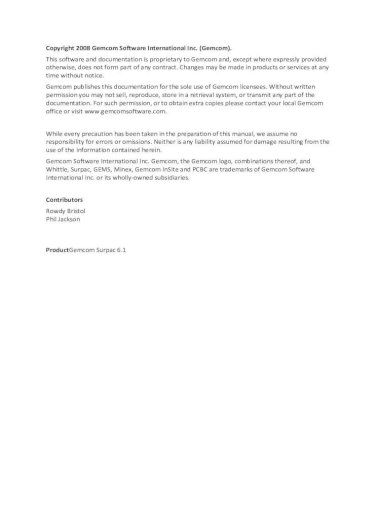

The block model consists of interpolated values instead of true measurements.

There are other ways to achieve a result.īlock modelling concepts The block model is a form of spatially-referenced database that provides a means for modelling a 3D body from point and interval data, such as drillhole sample data. Note: This workflow demonstrates the steps in this tutorial. Requirements Before you begin this tutorial, you must have: lĪ good understanding of the basic Surpac concepts of strings, segments, DTMs, and string tools Surpac installed on your computer the data set accompanying this tutorial Introduction Overview By working through the examples in this tutorial you will learn: l l l l lĪbout Surpac’s block modelling module and the concept of block modelling to fill a block model from drillhole data from a geological database to constrain a block model to filter out specific blocks to report volume, tonnage and grade from a block model about column processing of a block model

Task: View the data Classify blocks Task: Classify blocks into ore and waste Reduction and dilution Task: Calculate dilution and reduction Recoverable product Task: Calculate recoverable product Thicknesses Task: Calculate column thickness Partial percent reporting from the block model report Task: Report partial percent using geometric grouping in the block model report Simple partial percent reporting Task: Create partial percentage report Multiple percentage reporting Task: Report on grade, grouped by rock type Model reblocking Model reblocking Task: Perform model reblocking Column processing Task: Create a block model report Creating calculated attributes Task: Create calculated attributes Partial percentage reporting Setting up for this tutorial Setting the work directory Task: Set the work directory (Windows 7) Displaying the toolbar and menu bar Task: Display the Block Modelling toolbar and menu barĪpplying constraints to a block model Task: Apply constraints to a block model Estimation or filling the block model Assign Value Task: Fill the block model using Assign Value Nearest neighbour Task: Fill the BIF zone using nearest neighbour Inverse distance Task: Fill the sand zone using inverse distance Ordinary kriging Task: Fill the QPY zone using ordinary kriging Product Surpac™ 6.5 Last modified: Thursday,

Surpac block modelling tutorial pdf software#
Gemcom Software International Inc., Gemcom, the Gemcom logo, combinations thereof, and GEMS, Surpac, Minex, MineSched, Whittle, PCBC, Gemcom InSite, and Gemcom Hub are trademarks of Gemcom Software International Inc. Neither will be held liable for any damages caused or alleged to be caused from the use of the information contained herein. While every precaution has been taken in the preparation of this manual, neither the authors nor Gemcom assumes responsibility for errors or omissions. Changes may be made in products or services at any time without notice. For such permission, or to obtain extra copies please contact your local Gemcom office, or visit This software and documentation is proprietary to Gemcom and, except where expressly provided otherwise, does not form part of any contract. Without written permission, you may not sell, reproduce, store in a retrieval system, or transmit any part of this documentation. Gemcom publishes this documentation for the sole use of Gemcom licensees. Copyright © 2013 Gemcom Software International Inc.


 0 kommentar(er)
0 kommentar(er)
